#Dogpotty
Text
DIY Pet Projects: Fun and Creative Ideas for Your Furry Friends Introduction: Engaging in do-it-yourself (DIY) projects for your pets not only allows you to exercise your creativity but also provides a unique opportunity to bond with your furry companions. From toys and treats to accessories and furniture, there's no shortage of exciting projects to undertake. In this blog post, we'll explore some fun and creative DIY pet projects that will keep your pets entertained and happy. 1. DIY Pet Toys: a. Braided Rope Toy: Cut old t-shirts or fabric into strips, braid them together, and tie knots at each end to create a durable and interactive chew toy for dogs. It's a great way to repurpose old clothing while providing a fun and engaging toy for your pup. b. Feather Wand: Attach colorful feathers or fabric strips to a string or stick, creating an interactive wand for your feline friend. The movement and textures will captivate their attention, stimulating their natural hunting instincts. 2. Homemade Pet Treats: a. Frozen Treats: Blend together ingredients like plain yogurt, ripe fruits, and a small amount of honey. Pour the mixture into ice cube trays or silicone molds and freeze them. These frozen treats are a refreshing and healthy snack for hot summer days. b. Baked Treats: Find simple recipes online for homemade pet treats using ingredients like peanut butter, pumpkin, or sweet potato. Shape the dough into fun shapes using cookie cutters and bake them. Your pets will love the delicious and wholesome goodies. 3. DIY Pet Bed: Transform an old suitcase or a wooden crate into a cozy pet bed: a. Suitcase Bed: Remove the inner lining of a vintage suitcase and add a soft cushion or blanket inside. Decorate the outside of the suitcase with fabric or paint to match your home decor. It creates a unique and stylish resting place for your pet. b. Crate Bed: Line a wooden crate with a plush cushion and add pillows or blankets for extra comfort. Customize the crate with paint or stencils to give it a personalized touch. Your pet will have a comfortable and fashionable spot to relax. 4. Pet Enrichment Projects: a. DIY Puzzle Toys: Repurpose plastic bottles or cardboard tubes by cutting holes in them and placing treats inside. Your pet will have to figure out how to access the treats, providing mental stimulation and entertainment. b. Snuffle Mat: Make a snuffle mat by tying strips of fleece or fabric to a rubber mat or sturdy base. Hide treats or kibble within the strips, encouraging your pet to use their sense of smell and forage for food. It's a fantastic enrichment activity for dogs and cats. 5. DIY Grooming Accessories: a. Homemade Pet Shampoo: Create a natural and gentle pet shampoo by mixing liquid castile soap with water, adding a few drops of essential oil if desired. It's a cost-effective and chemical-free option for keeping your pets clean and fresh. b. Pet Paw Balm: Combine natural ingredients like coconut oil, shea butter, and beeswax to make a soothing paw balm. Apply it to your pet's paws to protect them from dryness and cracking, especially during harsh weather conditions. Conclusion: Embarking on DIY pet projects not only allows you to unleash your creativity but also provides numerous benefits for your furry friends. From toys and treats to accessories and enrichment activities, these projects engage your pets' senses and strengthen the bond you share. So, roll up your sleeves, gather your materials, and embark on a fun-filled journey of creating homemade delights for your beloved pets.
Engaging in do-it-yourself (DIY) projects for your pets not only allows you to exercise your creativity but also provides a unique opportunity to bond with your furry companions. From toys and treats to accessories and furniture, there’s no shortage of exciting projects to undertake. In this blog post, we’ll explore some fun and creative DIY pet projects that will keep your pets entertained and…

View On WordPress
#affiliate#article#articles#blog#bloggers#blogging#catblog#catfood#CATS#catsplay#dog health#dog products#dogpotty#DOGS#dogtraining#petsupplies#PUBLICATIONS#publishers
0 notes
Text
Best Dog Trainer
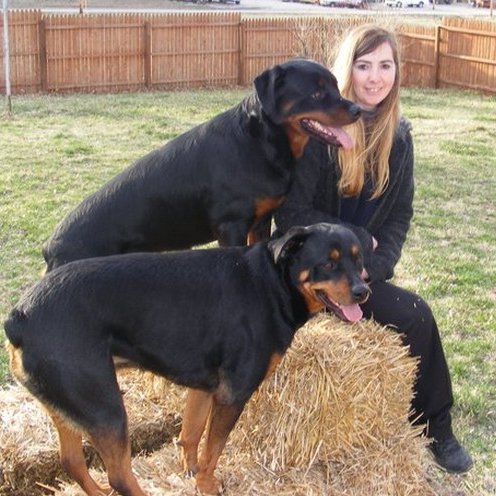
The Brain Training for Dogs member’s area is jam-packed with information owners can use to train their dog in the most effective way. It includes a puppy training section, two online training courses to boost intelligence, obedience, and behavior, over 100 articles tackling a huge range of behavior problems (as well as doggy behavior and psychology), and a private forum frequented by Adrienne. Know more.......
#dogtraining#Dogtrainer#Dogbrain#Dogpotty#Doginstagram#Dogoftumblr#Dogpicture#Dogimage#Dogpothos#Doglover
1 note
·
View note
Video
youtube
House train a dog without a crate [dog toilet training - potty training ...
#dogtoilettraining#doghousetraining#dogpotty#dog potty training#dogpottytraining#housetrainyourdog#housetrainyourpuppy#toilettrainyourdog#dogtraining#dogtrainer#dogtrainingtips
0 notes
Photo

Wee-Wee® Scented Pads: Wee-Wee® Scented Pads are high-quality, quilted, absorbent pads made with a 5-ply leak-proof Floor Armor® System. Treated to attract your pet when nature calls, Scented Wee-Wee® Pads provide a pleasing aroma of lavender and chamomile. Pads measure 22" x 23". Now in Stock! PetShop Plus, 3 Abiola Segun Ajayi St. Off Muri Okunola St, or Off Etim Inyang Crescent, Near Chocolate Royale/Cool FM/Wazobia FM, Victoria Island, Lagos. . PetShop Plus, 19B Bush Street, Mende, Maryland/ Anthony Village, Lagos. . #PetShopPlus #FourPaws #FourPawsProducts #DogPottyTraining #DogPotty (at Victoria Island, Lagos) https://www.instagram.com/p/B8P4HCshS62/?igshid=cshb4tgbwh2k
0 notes
Text
How to Housebreak Your New Puppy
Teaching your new puppy to use the bathroom at the right time and in the right place is one of the most important parts of training. Use these three key puppy potty training tips to teach your pup to go where you want them to go.
Potty training a new puppy can seem like a challenging task, especially when you’re faced with all of the other aspects of making a pup feel safe and comfortable in their new home. But housebreaking your dog is a great way to introduce training and routine into their life, and it gives you and your dog opportunities to bond. Check out these helpful tips for training your dog to use the bathroom outside.
Key 1: ConsistencyRoutine
Dogs are creatures of habit and they appreciate routine. For example, have you ever noticed how dogs ask to go for a walk at about the same time every day? That’s why one of the major keys to potty training your pup is to implement a routine and keep it as consistent as possible.
Start by setting up a feeding schedule. When your puppy is young, they will likely need to go to the bathroom soon after eating. Take your pup outside about 30 minutes after eating to encourage them to associate using the bathroom at the end of a meal.
Tip: Puppies need to relieve themselves more frequently than adult dogs. While you’re training and learning, try to take your pup out every 20-30 minutes to prevent accidents in the house.
Commands
Before taking your dog out, introduce a verbal command like, “let’s go out.” After repetition, your puppy will start to associate these words with going to the bathroom. Make sure to pick a different phrase for when you take your dog out to play, so that they don’t get confused.
Location
Designate a spot in the yard where you want your puppy to relieve themselves. Take them out on a leash so that you can control their range of access, limiting them to the specific area. Also make sure to let your dog out at the same door so they learn where to go when they need to notify you of their bathroom needs.
When you take your puppy outside to their designated bathroom spot, they’ll probably sniff and circle a few minutes before deciding where to go. However, there will be times when you’re in a hurry and wish your puppy to do their business quickly. As you begin housebreaking your dog, introduce a verbal command when they start circling, such as “go potty,” so they will begin to associate those words with relieving themselves.
With repetition and consistency, your puppy will learn what they’re supposed to do and where they’re supposed to go. These habits will become routine as your puppy ages into adulthood, leading to almost no accidents in the house.
Key 2: Supervision
Puppies have boundless energy and curiosity. They will want to run all around the house, sniffing and exploring while they become familiar with their new environment. It’s important to keep a close eye on your puppy at all times as accidents can happen when you least expect them. Keep your pup in the same room with you while you’re potty training them. Your puppy might not know they need to relieve themselves until it’s too late. But if you are close by, you can spot them starting to squat and redirect them outside where they are allowed to relieve themselves.
Close doors and use baby gates to prevent your puppy from going into rooms where they cannot be supervised. This will confine accidents to one place. For times when you need to leave your puppy at home, you can keep them in a puppy-proofed room, such as the laundry room or mudroom. You can also crate train your new puppy.
Crate training your puppy offers many benefits, especially when it comes to potty training. Most dogs are reluctant to go the bathroom in their crate since they will be confined with it. This gives your puppy incentive to hold it until you come home and let them out.
Note: Crates are not a fool-proof method to prevent accidents, especially if you’re gone for long stretches of time. Keep in mind that your puppy might not be able to hold it for eight hours while you’re at work. Plan accordingly to let them out in the middle of the day. Neither of you wants them sitting in a soiled crate all day.
Key 3: Positive Reinforcement
As you’re teaching your puppy when and where is the right time to use the bathroom, it’s important to encourage them whenever they’re successful. When your puppy goes to the bathroom where they should, praise them and offer a treat or piece of kibble. Your dog may not always be able to understand your words, but they can understand tone of voice, and they’re certainly familiar with the language of food. When they know they’re doing the right thing, they will want to continue to do so to please you.
No matter how consistent or how vigilant you are accidents are bound to happen. And that’s ok! You’re both still learning. So when your dog has an accident, avoid yelling and harsh punishment. Instead, stick to their routine and continue to encourage positive behaviors. With love and patience, your new puppy dog will be housebroken in a matter of weeks.
0 notes
Video
Love this little pooper scooper! And Pet Nail Pet Bags are 100% compostable. #ecofriendly #poopbags #dogsupplies #dogpotty #dogs #puppy #puppies #dogwalking https://www.instagram.com/p/B6Hh-wgprNV/?igshid=v89ng35wa0cd
0 notes
Text
What is the reason that dogs behave aggressively towards each other!

Why do dogs behave aggressively towards each other?
Dog Aggression what are the Myths and Facts.
We’ve all heard about the aggressive dog, that ‘mean, dangerous’ animal down the street. Many of us have even seen dogs fight with each other, or worse. It would be hard to miss stories of vicious dogfights, especially with the help of mass media. But why exactly are dogs sometimes aggressive towards each other, and why do they sometimes feel the need to kill each other?
So what is the reason for dogs behave aggressively towards each other?

To understand the whole behaviour we have to go way back ...
The Grey Wolf and Alpha Theory
When attempting to understand the ‘why’ for any dog behaviour, it is sometimes best to look at the way their ancestral wolf behaved toward each other. Thousands of dog owners still believe in the ‘Alpha’ top dog, thinking that in a dog’s mind, the strongest always ranks highest and deserves the first pick of everything. Thanks to the great ‘Dog Whisperer’ Cesar Millan, this theory was further proliferated throughout America and the world.
Most people don’t know this Alpha theory was based on a poorly conducted zoological study of captive wolves way back in the 1940’s, a time when we already had a very poor understanding of canine behaviour. Biologists concluded it’s natural for wolves to battle for dominance, the strongest becoming the ‘Alpha’ since that was the behaviour presented by this small captive grouping.
It wasn’t long after this generalised wolf behaviour became the accepted dog behaviour since dogs evolved from wolves. Unfortunately for Cesar lovers, the Alpa theory has been since discredited by the scientific community as a whole. Dogs are not always aggressive simply because they are larger, stronger, and can be. This is also not the way wolves naturally behave in the wild, their packs resembling more of a family unit than a dominant hierarchy.
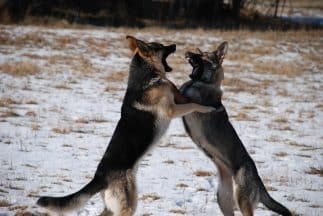
What are the signs of dog aggression:
When your dogs start to Staring/like direct eye contact
Low range growling
Growling, snapping, snarling
Tall, rigid stance with erect ears
Tail held high, possibly moving stiffly from side to side
Though these are common signs, some aggressive dogs will often give no indication (or at least not easily perceived by humans) before biting. Medical concerns can sometimes also cause a dog to respond aggressively; it’s important to seek veterinary care if this aggression is unusual behaviour.
Possible causes of dog aggression
Negative/ traumatising past experiences, including abuse or neglect
Poor socialisation
Owner’s behaviour may contribute
Fear
The desire to protect territory or family members
Painful medical condition
The desire to retain social status, not to be confused with dominance/alpha dog theory
dog training aggressive behaviour
Graph Displays Common Aggressive Household Dog Breeds

The dog breeds listed in the graph are all common house pet breeds, scoring in the 60% range in the official American Temperament Test (as of 2017).
Though some dogs scored below these, these common household breeds scored on the low end. You’ll notice that the American Pitbull Terrier (87.4%) and Rottweiler (84.7%), breeds commonly thought to be more aggressive by most people, scored well above those you see here.

• According to the American Kennel Club, the vast majority of dog bites occur in intact (non-neutered) males.
The Pitfalls of Human Selective Breeding
Why certain Dog breeds become more dangerous than others?
We’ve also all hears certain breeds are supposedly more dangerous than others, like the Pitbull or Rottweiler. This answer here comes down to genetics and heredity. Some breeds can be more aggressive than others or carry aggressive tendencies, today often because aggression was a straight sought after heavily by early breeders and passed to offspring.
● Believe it or not, many toy breeds rank the highest, by far, in terms of aggression (see graph above and explanation).
Rottweiler
The Rottweiler is an ancient breed, developed around 2000 years ago during the height of the Roman Empire to help guard livestock (among other things), although that was a much different animal than the Rottweiler of today.
Rottweilers need experienced dog owners and when handled well those are loving and good dog companions.
Pitbull
Pitbulls were indeed developed as a ‘fighting’ dog, although the story is different than most people think. After the much loved English ‘sport’ of bull baiting was deemed excessively cruel and outlawed in 1835, enthusiasts started mixing bulldogs of the time with terriers. The resulting Pitbulls were first used in the sport of ‘Ratting’ before the dog fighting many people know of.

The Pitbull one of the best Family dogs
Contrary to popular belief, the Pitbull is one of the best overall family breeds in existence today, very good with people thanks primarily because they were initially bred to be very loyal to human handlers. The breed does carry a tendency for dog aggression. It depends on the Owner of the dog and the training.
The Wonders of Socialization
Socialisation means exactly how it sounds, building social skills via social contact. These are both perhaps some of the most essential skills a dog will ever learn, and some of the most important training an owner will ever endure.
A well-socialised dog, one who has been raised among other animals, encouraged to play and rewarded for interacting well with both humans and dogs, is rarely aggressive.
Aggressive tendencies are far more common among dogs who have been raised alone, not allowed or encouraged to play and interact with other animals when young, or endured a traumatic experience in the past.
We can all imagine that dog that does his best to stay back from approaching people or other animals, emitting a low growl when they do come too close.
Many of us can imagine the sudden, sharp bellowing of the owner in response to his dog’s reactions. Fear-based aggression is more common among poorly socialised dogs, strays, and in many cases ‘puppy mill’ dogs.
Conclusion: The Importance of Understanding
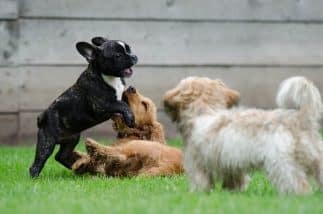
Despite what you may have read, heard from the bias news media or an uneducated friend may have said, dog behaviour is very predictable for those that pay attention, know what to look for, and what situations to avoid.
Dogs are instinctual animals, their reactions governed by a set of instinctual ‘rules’. Outside of the rare genetic or developmental issue, they will always follow these instincts.
When speaking of domesticated pets, the vast majority of dog aggression falls to the fault of the owner or the owner of the offending animal for failing to either ensure a safe environment or adequately educate themselves. Where dogs are not capable of intellectual thought, reasoning, and will never fully understand human behaviour, humans are easily capable of such a level of understanding- if they wanted to be.
A situation where dogs behave aggressively towards each other can happen at any time during a walk with your dog or just a stroll in the park, not every owner has control over there dog.
If you are unsure and you encounter some problem behaviour with your dog it is always good to look for a Certified Dog Trainer. ( CDT) Every Dog Owner should educate themselves in the breed or mix breed to understand the basis of their dog. Dog training is always recommended and it depends on oneself if you are capable to train the dog yourself or if you join a dog training class.
There are lots of dog training treats available. Dog training can be fun for you and your dog.
Share your experience with your dog have you been encountered a situation with your dog where another dog is charging at your dog? I only experienced it once but it was a frightening experience.
All Yours
Melanie
Read the full article
#aggressivedoghelp#bestdogtrainingbook#CesarMilan#CharlizeTheronandTucker#dogcelebrities#dogfood#dogpotty#dogtrainingleash#dogtrainingpads#dogtrainingschool#dogtrainingshockcollar#dogtrainingvideos#dogtrainingwhistle#dogsbehaveaggressively#HilarySwankandKarooandRumi#pottytrainingpuppy#RyanReynoldsandBaxter
0 notes
Photo

Here is Pongo in the snow with a #PooVault. @pongo.dal is a #dalmatian from Columbia, but living in Virginia. He is bi-lingual and loves all the pretty ladies. # # #dalmatianmom #dalmatiandog #dogmom #doginsnow #traildog #outdoordog #dogoutdoors #snowdog #walkingwithmydog #doggear #adventurousdog #dogsandpals_instagram #dogmomlife #dogpoopbags #dogpoopbagcarrier #dogpoop #dogpoo #domorewithyourdog #dogdoo #dogpotty #dogcrap #dogshit #dogwastecleanup #dogpoocleanup https://www.instagram.com/p/BsrsWjahkg0/?utm_source=ig_tumblr_share&igshid=1n3ips6zefe0s
#poovault#dalmatian#dalmatianmom#dalmatiandog#dogmom#doginsnow#traildog#outdoordog#dogoutdoors#snowdog#walkingwithmydog#doggear#adventurousdog#dogsandpals_instagram#dogmomlife#dogpoopbags#dogpoopbagcarrier#dogpoop#dogpoo#domorewithyourdog#dogdoo#dogpotty#dogcrap#dogshit#dogwastecleanup#dogpoocleanup
0 notes
Text
#puppytraining #dogpotty #dogs #doglovers #beagle #puppy https://t.co/lpLmaGOUNq
#puppytraining #dogpotty #dogs #doglovers #beagle #puppy https://t.co/lpLmaGOUNq
— Amee (@realadvicegal) July 21, 2017
from Twitter https://twitter.com/realadvicegal
July 21, 2017 at 03:49PM
via IFTTT
0 notes
Text
Celebrating Your Beloved Pet's Birthday: A Paw-some Party Guide
Our furry friends bring us immense joy, unwavering loyalty, and unconditional love every single day. They’re more than just pets; they’re cherished members of our families. So, when it comes to celebrating their birthdays, why not go all out? Whether it’s their first year or a milestone occasion, throwing a paw-some party is a delightful way to honor your beloved pet and create lasting memories.…
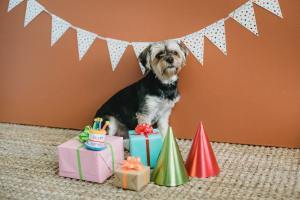
View On WordPress
#cats#dogs#petamor#affiliate#airtag#article#articles#bloggers#blogging#catblog#catfood#CATS#catsplay#dog health#dog products#dogpotty#DOGS#dogtraining#dosgs#everybody#pet lovers#PETS#PUBLICATIONS
0 notes
Text
Dog Potty Training
Dog Potty training
Learn more...
#Dogpotty#Dogtraining#Dogtrainer#Dogbraintraning#Dogwattertraning#Dogpicture#Dogimages#Dogpothos#Dogoftumblr#Doginstagram
0 notes
Video
Have to take care of the dogs before anything else!! #bestdog #doglife #dogsofinstagram #oldeenglishbulldogge #dogoftheday #doglover #dogpotty
0 notes
Photo

Our Wee-Wee Pads with the power of Febreze freshness have all that you need to protect your floors and keep your home smelling clean this holiday season. • Advanced formula odor control • Fast absorption. • Leak-proof system #FourPawsProducts #FourPaws #DogPotty #DogPottyTraining #DogCare #PetShopPlus #dogs (at Lagos, Nigeria) https://www.instagram.com/p/B8P261FhuAj/?igshid=1mqq93lumitxk
0 notes
Text
What is the reason that dogs behave aggressively towards each other!
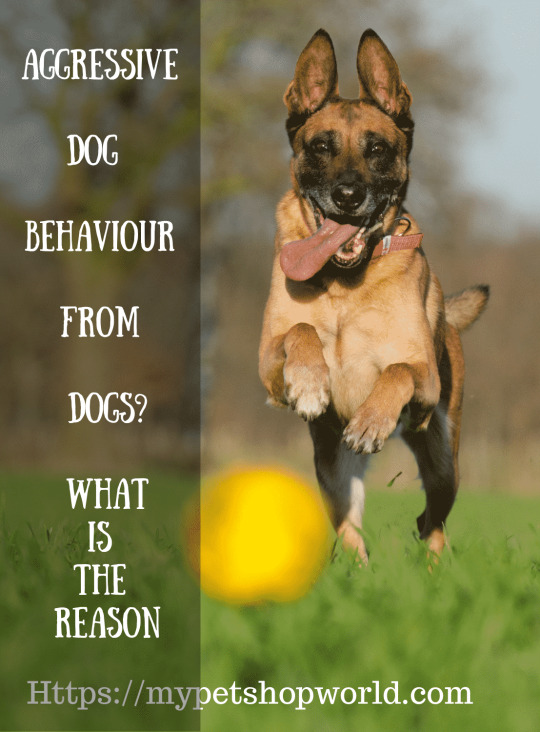
Why do dogs behave aggressively towards each other?
Dog Aggression what are the Myths and Facts.
We’ve all heard about the aggressive dog, that ‘mean, dangerous’ animal down the street. Many of us have even seen dogs fight with each other, or worse. It would be hard to miss stories of vicious dogfights, especially with the help of mass media. But why exactly are dogs sometimes aggressive towards each other, and why do they sometimes feel the need to kill each other?
So what is the reason for dogs behave aggressively towards each other?
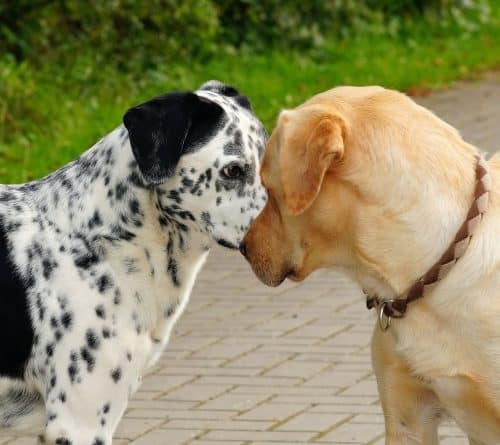
To understand the whole behaviour we have to go way back ...
The Grey Wolf and Alpha Theory
When attempting to understand the ‘why’ for any dog behaviour, it is sometimes best to look at the way their ancestral wolf behaved toward each other. Thousands of dog owners still believe in the ‘Alpha’ top dog, thinking that in a dog’s mind, the strongest always ranks highest and deserves the first pick of everything. Thanks to the great ‘Dog Whisperer’ Cesar Millan, this theory was further proliferated throughout America and the world.
Most people don’t know this Alpha theory was based on a poorly conducted zoological study of captive wolves way back in the 1940’s, a time when we already had a very poor understanding of canine behaviour. Biologists concluded it’s natural for wolves to battle for dominance, the strongest becoming the ‘Alpha’ since that was the behaviour presented by this small captive grouping.
It wasn’t long after this generalised wolf behaviour became the accepted dog behaviour since dogs evolved from wolves. Unfortunately for Cesar lovers, the Alpa theory has been since discredited by the scientific community as a whole. Dogs are not always aggressive simply because they are larger, stronger, and can be. This is also not the way wolves naturally behave in the wild, their packs resembling more of a family unit than a dominant hierarchy.
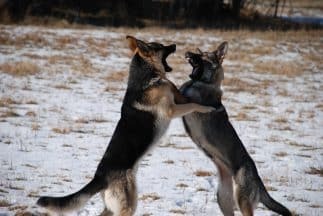
What are the signs of dog aggression:
When your dogs start to Staring/like direct eye contact
Low range growling
Growling, snapping, snarling
Tall, rigid stance with erect ears
Tail held high, possibly moving stiffly from side to side
Though these are common signs, some aggressive dogs will often give no indication (or at least not easily perceived by humans) before biting. Medical concerns can sometimes also cause a dog to respond aggressively; it’s important to seek veterinary care if this aggression is unusual behaviour.
Possible causes of dog aggression
Negative/ traumatising past experiences, including abuse or neglect
Poor socialisation
Owner’s behaviour may contribute
Fear
The desire to protect territory or family members
Painful medical condition
The desire to retain social status, not to be confused with dominance/alpha dog theory
dog training aggressive behaviour
Graph Displays Common Aggressive Household Dog Breeds

The dog breeds listed in the graph are all common house pet breeds, scoring in the 60% range in the official American Temperament Test (as of 2017).
Though some dogs scored below these, these common household breeds scored on the low end. You’ll notice that the American Pitbull Terrier (87.4%) and Rottweiler (84.7%), breeds commonly thought to be more aggressive by most people, scored well above those you see here.

• According to the American Kennel Club, the vast majority of dog bites occur in intact (non-neutered) males.
The Pitfalls of Human Selective Breeding
Why certain Dog breeds become more dangerous than others?
We’ve also all hears certain breeds are supposedly more dangerous than others, like the Pitbull or Rottweiler. This answer here comes down to genetics and heredity. Some breeds can be more aggressive than others or carry aggressive tendencies, today often because aggression was a straight sought after heavily by early breeders and passed to offspring.
● Believe it or not, many toy breeds rank the highest, by far, in terms of aggression (see graph above and explanation).
Rottweiler
The Rottweiler is an ancient breed, developed around 2000 years ago during the height of the Roman Empire to help guard livestock (among other things), although that was a much different animal than the Rottweiler of today.
Rottweilers need experienced dog owners and when handled well those are loving and good dog companions.
Pitbull
Pitbulls were indeed developed as a ‘fighting’ dog, although the story is different than most people think. After the much loved English ‘sport’ of bull baiting was deemed excessively cruel and outlawed in 1835, enthusiasts started mixing bulldogs of the time with terriers. The resulting Pitbulls were first used in the sport of ‘Ratting’ before the dog fighting many people know of.
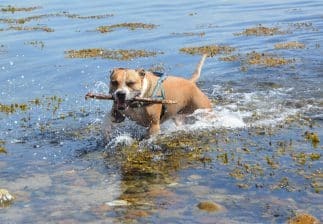
The Pitbull one of the best Family dogs
Contrary to popular belief, the Pitbull is one of the best overall family breeds in existence today, very good with people thanks primarily because they were initially bred to be very loyal to human handlers. The breed does carry a tendency for dog aggression. It depends on the Owner of the dog and the training.
The Wonders of Socialization
Socialisation means exactly how it sounds, building social skills via social contact. These are both perhaps some of the most essential skills a dog will ever learn, and some of the most important training an owner will ever endure.
A well-socialised dog, one who has been raised among other animals, encouraged to play and rewarded for interacting well with both humans and dogs, is rarely aggressive.
Aggressive tendencies are far more common among dogs who have been raised alone, not allowed or encouraged to play and interact with other animals when young, or endured a traumatic experience in the past.
We can all imagine that dog that does his best to stay back from approaching people or other animals, emitting a low growl when they do come too close.
Many of us can imagine the sudden, sharp bellowing of the owner in response to his dog’s reactions. Fear-based aggression is more common among poorly socialised dogs, strays, and in many cases ‘puppy mill’ dogs.
Conclusion: The Importance of Understanding
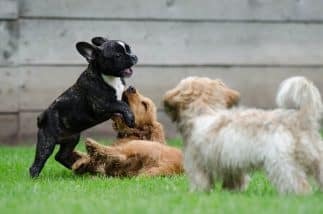
Despite what you may have read, heard from the bias news media or an uneducated friend may have said, dog behaviour is very predictable for those that pay attention, know what to look for, and what situations to avoid.
Dogs are instinctual animals, their reactions governed by a set of instinctual ‘rules’. Outside of the rare genetic or developmental issue, they will always follow these instincts.
When speaking of domesticated pets, the vast majority of dog aggression falls to the fault of the owner or the owner of the offending animal for failing to either ensure a safe environment or adequately educate themselves. Where dogs are not capable of intellectual thought, reasoning, and will never fully understand human behaviour, humans are easily capable of such a level of understanding- if they wanted to be.
A situation where dogs behave aggressively towards each other can happen at any time during a walk with your dog or just a stroll in the park, not every owner has control over there dog.
If you are unsure and you encounter some problem behaviour with your dog it is always good to look for a Certified Dog Trainer. ( CDT) Every Dog Owner should educate themselves in the breed or mix breed to understand the basis of their dog. Dog training is always recommended and it depends on oneself if you are capable to train the dog yourself or if you join a dog training class.
There are lots of dog training treats available. Dog training can be fun for you and your dog.
Share your experience with your dog have you been encountered a situation with your dog where another dog is charging at your dog? I only experienced it once but it was a frightening experience.
All Yours
Melanie
Read the full article
#aggressivedoghelp#bestdogtrainingbook#CesarMilan#CharlizeTheronandTucker#dogcelebrities#dogfood#dogpotty#dogtrainingleash#dogtrainingpads#dogtrainingschool#dogtrainingshockcollar#dogtrainingvideos#dogtrainingwhistle#dogsbehaveaggressively#HilarySwankandKarooandRumi#pottytrainingpuppy#RyanReynoldsandBaxter
0 notes